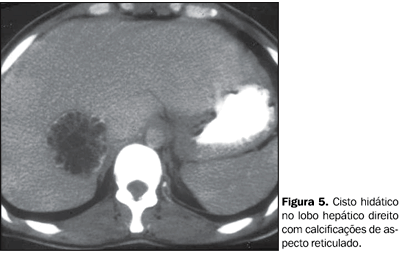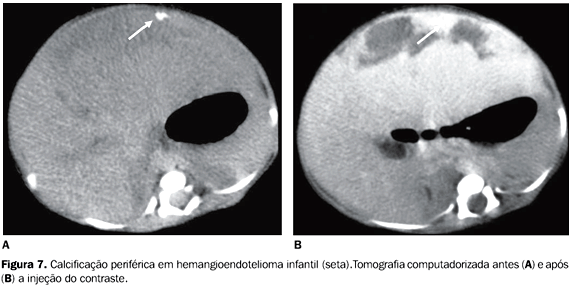PURPOSE: To determine the frequency and etiology of intrahepatic calcifications diagnosed on abdominal computed tomography (CT) studies. MATERIALS AND METHODS: A retrospective study of 1,362 consecutive CT scans of the abdomen was carried out to determine the presence of intrahepatic calcifications. The clinical and laboratorial data of all patients with liver calcifications were reviewed in order to establish the etiology of the lesions. RESULTS: Intrahepatic calcifications were found in 3.6% (49/1,362) of the patients, and were predominantly seen in women (57.2%) than in men (42.8%). The population age ranged from 18 to 92 years (mean 59.4 years; median 63.5 years). Calcifications were considered residual and without clinical repercussion in most cases (39/49; 79.5%) whereas in 14.4% (7/49) of the patients calcifications were associated with metastatic disease and in 6.1% (3/49) with cystic lesions. The primary tumors in the seven patients with calcified liver metastases were colon carcinoma (five patients), sarcoma (one patient) and malignant ovarian teratoma (one patient). Two of these patients presented calcifications only after chemotherapy. CONCLUSION: Intrahepatic calcifications are infrequent findings on routine abdominal CT scans (< 5%) and are mostly related to previous inflammatory and/or infectious diseases.
Liver; Calcification; Neoplasm; Computed tomography









